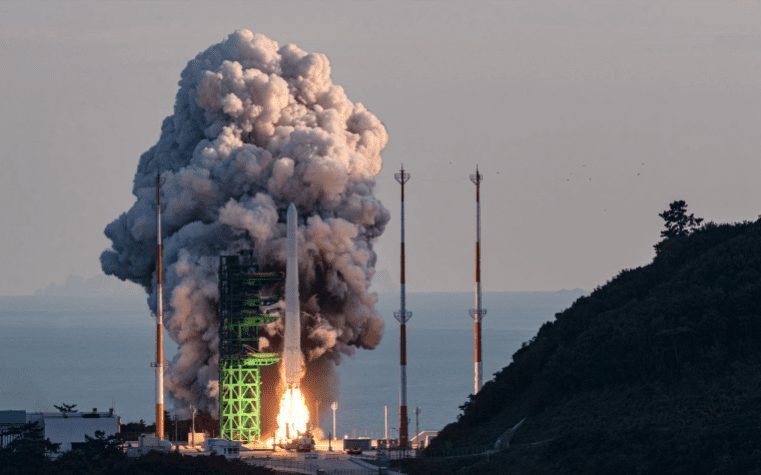South Korea successfully launched its first satellite using Nuri, a domestically developed rocket, on Tuesday, officials said.
After a failed attempt last year, the launch represents significant strides in South Korea’s growing aerospace program. It demonstrates that the country has vital technologies to launch spy satellites and build larger missiles amid tensions with North Korea.
More than 154 feet long and weighing 200 tons, the three-stage rocket was launched from South Korea’s Naro Space Center in the country’s southern coastal region at 4 p.m. local time, the country’s science ministry said. The rocket placed a functioning “performance verification” satellite at a target altitude of 435 miles.
The satellite transmitted its status to a crewless South Korean station in Antarctica. Ministry officials said the rocket was attached to four CubeSats, mini-research satellites weighing between 7 and 21 pounds that will be launched into orbit one at a time starting June 29.
Science Minister Lee Jong-Ho said, “The science and technology of the Republic of Korea have made a great advance. The government will continue its audacious march toward becoming a space power together with the people.”
President Yoon Suk Yeol hailed the accomplishment and promised to keep his campaign pledge to inaugurate a state aerospace agency.
South Korea has historically found competing with its Asian neighbors in the space race challenging.
Last October, South Korea first attempted to launch a dummy satellite with the Nuri rocket. The attempt failed when the rocket’s third-stage engine stopped working, and the dummy satellite could not reach the low Earth orbit.
In 2009 and 2010, South Korea’s first two carrier rocket launches utilized Russian-made engines, and both failed to reach orbit. In 2013, South Korea eventually achieved the goal of sending a carrier rocket into low orbit, but this was also created using Russian technology.
Nuri, which means “world” in Korean, is South Korea’s first rocket made using the country’s own technology, opening the door to a range of future satellites and missions.
South Korea has spent almost 2 trillion Korean won (about $1.5 billion) in building the three-stage rocket since 2010. According to Korea Aerospace Research Institute, more than 300 South Korean companies participated in its development.






